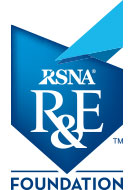Your Donations in Action: Peter Abraham, MD
Demonstrating the cost effectiveness of intraoperative MRI for high-grade glioma


Intraoperative MRI improves gross-total resection of high-grade glioma. However, the cost-effectiveness of intraoperative MRI had not been established.
In his 2018 Research Medical Student Grant, “Cost-Effectiveness of Intraoperative MRI in the Treatment of High-Grade Gliomas,” Peter Abraham, MD, resident physician, University of California, San Diego, constructed a microsimulation model to record quality of life and treatment costs for patients with high-grade glioma from initial tumor resection until death.
Intraoperative MRI was found to have an incremental cost-effectiveness ratio of $76,442 per quality-adjusted life year (QALY) compared with neuronavigation systems, while reliably maximizing the extent of glioma resection, providing patients with an average of 1.5 additional months of progression-free survival. Probabilistic sensitivity analysis demonstrated that intraoperative MRI had a 99.5% chance of cost-effectiveness at a willingness-to-pay threshold of $100,000 per QALY. Probability of postoperative aphasia, gross total resection rate, duration of postoperative aphasia, and cost of intraoperative MRI per operation were significant predictors of cost effectiveness.
“This research may guide hospital systems in their decision to purchase intraoperative MRI units and may inspire surgeons, radiologists and other physicians to consider utilizing clinical decision analysis models to weigh risks and benefits of medical interventions more quantitatively,” Dr. Abraham said. “More than that, though, the research adds to a body of health services and health policy research within radiology that seeks to understand radiologists’ value added, while aiming to curb health care system costs, to more equitably provide care.”
For More Information
Learn more about R&E Foundation funding opportunities.
Read last month's Your Donations in Action article.